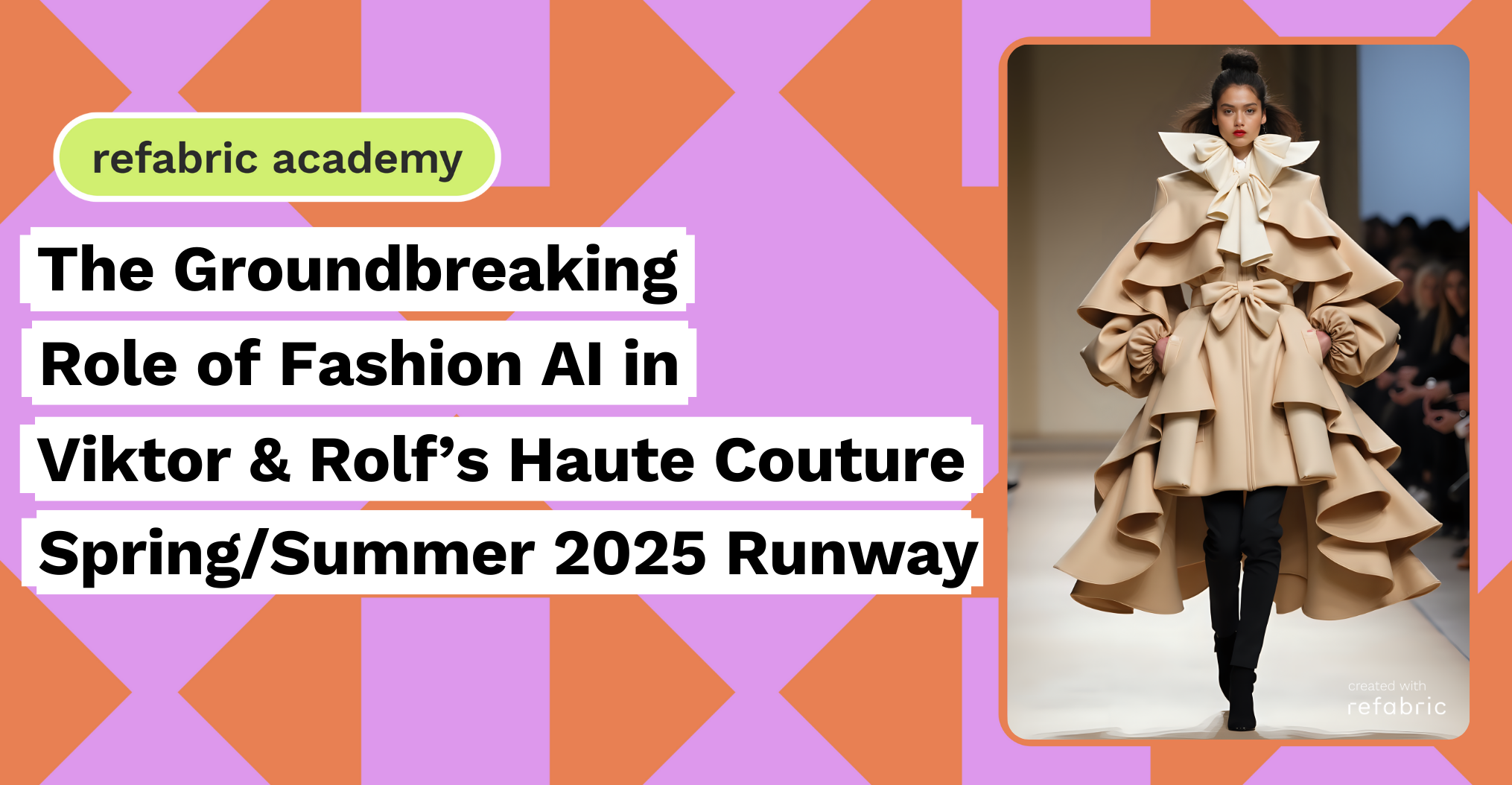In an era where fashion AI is rapidly reshaping industries, fashion remains one of its most fascinating frontiers. Discussions about fashion AI often teeter between boundless excitement over its creative potential and deep-seated anxieties about its implications. At Paris Haute Couture Week, Viktor & Rolf took a definitive stance on this accelerating evolution, presenting a Spring/Summer 2025 collection that masterfully intertwined traditional craftsmanship with digital experimentation. The result was a thought-provoking display that blurred the lines between human ingenuity, technological intervention, and the uncanny.
Fashion AI and Structured Creativity in Couture
The collection, conceived by Viktor Horsting and Rolf Snoeren, was a striking example of fashion AI’s potential within couture. The duo made a deliberate choice to construct the entire lineup from a single material, silk gazar, a direct nod to their 1999 “Blacklight” collection, which also heavily featured voluminous silhouettes in the same fabric. By limiting themselves to one textile, Viktor & Rolf not only highlighted the precision and discipline synonymous with haute couture but also mirrored fashion AI’s structured, algorithmic approach to design. The collection, consisting of 24 looks, was an exercise in variation, reinterpreting a single archetypal outfit, a beige trench coat, a white shirt, and blue trousers, through wildly different lenses.
Each iteration played with proportion, volume, and embellishment, shifting from minimalist and pristine to extravagant and baroque, bow-laden and distorted. Shirts were stretched into ballooning mullet gowns, slinky floor-length shirt dresses, or were simply impeccably classic in their execution. Trousers came wide-legged with generous turned-up hems, shrunk against the leg as extra-slim cuts, crinkled into ruffly bloomers, or even invisible, tucked as underlayers. This continuous remixing of a foundational look underscored fashion AI’s ability to generate endless variations from a single input, much like an advanced generative model trained to reinvent a given aesthetic.
AI-Driven Presentation and Storytelling
Yet, the garments were only part of the story. The presentation itself redefined traditional couture show formats, embracing fashion AI as both a conceptual and performative element. Instead of a conventional spoken introduction or live narration, an AI-generated voice dictated the details of each ensemble, guiding the audience through the digital lens of machine learning.
A slightly robotic voice in French echoed, “Beige trench in silk gazar, white shirt in silk gazar, blue trousers in silk gazar,” as each passage from Viktor & Rolf appeared. And if the succinct description sounded a little like the prompt you’d feed to an image generator, you had it on the nose. “It’s a bit like a human interpretation of the endless possibilities of artificial intelligence,” Snoeren said.
The Future of Fashion in an AI-Driven World
Viktor & Rolf’s foray into AI-driven couture was not merely a superficial dalliance with technology but a profound meditation on the evolving landscape of fashion. In a field where tradition and innovation often exist in delicate balance, the duo demonstrated that the two need not be mutually exclusive. Instead, their collection illustrated how fashion AI can serve as a tool for expansion rather than replacement, a collaborator in the ongoing dialogue between past and future.
While some may view fashion AI as a threat to human creativity, Viktor & Rolf positioned it as a catalyst for new forms of expression. By merging algorithmic rigor with couture’s organic creativity, Viktor & Rolf suggest that fashion AI and human ingenuity are not opposing forces but collaborators in shaping the future of fashion. By embracing its structured logic while retaining the soul of haute couture, they proved that technology, when wielded with intention, can enhance rather than diminish artistic vision. Their Spring/Summer 2025 collection was not just a showcase of garments; it was a manifesto, a statement on the future of fashion in an age where the digital and the tactile converge.
As fashion AI continues to shape the industry, Viktor & Rolf’s experiment serves as a compelling case study in the potential of human-machine collaboration. Whether unsettling, inspiring, or both, their latest collection solidifies their reputation as couturiers unafraid to challenge conventions and redefine what fashion can be in the 21st century.
